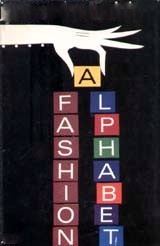After having followed Hiut Denim’s newsletter and blog for weeks now I could wait no longer to place the brand in the best practise category.
Hiut Denim is an authentic brand. If it were a person, Hiut would be personable, open, honest, trustworthy, fun: maybe with black and white views and opinions but always in line with its values. Surely, a person deeply bond to its roots.
Japan – for multiple reasons, not the least the still ongoing, if diminishing, cultural influence onto its neighbours – remains an interesting case to look at in terms of sustainable and ethical fashion. And vocabulary and its use and evolution is the start of it all.
Mistra Future Fashion (MFF) is a 4-year research project (2011-2015), funded by the Swedish government via Mistra, the Foundation of Strategic Environmental Research.
MFF has a very holistic approach that has the goal of supporting the industry to re-think their business models, design and industrial processes and promote consumer behaviour change.
It’s not news that there exist many, many labels out there that hope to convey low-risk or sustainability credentials to consumers (B2C) and/or buyers (B2B).
Some of these are indeed so specialised, or hidden within the larger context, that indeed few people have seen or taken note of it.
One such label is the Greenguard certification, which is focused entirely onto remedying negative health impacts in interior spaces: from furniture, to interior textiles, air filters, adhesives, flooring and floor finishes etc.
Recently, my colleague Ilaria Pasquinelli and I had the opportunity to participate in a, generally speaking, consumer facing product showcase and trade show.
For the purpose of this research, we built an interactive task which required the visitors to cut off one of their garment labels (i.e. the washing instructions), and then pin it to a map attached to a cork board according to 2 dimensions:
– ‘Made in‘: Where the garment was manufactured.
– ‘Made from‘: What the primary material the garment was made of.
Nordic countries have been recognised for their advanced sustainability practices, particularly at a business level. The Nordic Ecolabel is a voluntary certificate 100% made in Scandinavia that was established in 1989 by the Nordic Council of Ministers. The original aim of the label was probably to respond to the needs of the new “green consumer” movement that strengthened in the 80s after the environmentalism wave of the 1970s.
Oeko-Tex is, by numbers of products availale, both B2B as well as B2C, the most widely-used eco-label for textiles globally.
What most people aren’t quite aware of is, that Oeko-Tex offers 2 fairly substantially different certifications


